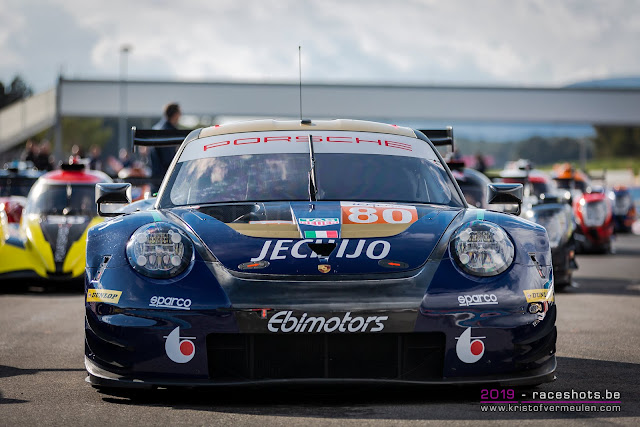G-Drive Racing in the afternoon and IDEC Sport in the evening/night session set the pace in Barcelona on Friday at the Circuit de Catalunya. Clouds and sunshine in Barcelona this afternoon, with temperatures reaching close to 30° all day while it never really cooled down and the evening session was driven under a very pleasant 24°.
A lap of 1.34.242 early in the afternoon session was enough for Jean-Eric Vergne to claim the top spot in his #26 Aurus 01. Nico Lapierre in the #37 Cool Racing Oreca 07 was second fastest, just 0.15 seconds behind the double Formula E champion. Anders Fjordbach really starts to feel at home now in the Oreca 07, setting the third-fastest time of the session in 1.34.456, just 2 tenths of a second shy of Vergne.
Rounding out the top 5 were Ben Hanley in the #21 Dragonspeed (1.34.729) and Ben Barnicoat in the #45 Carlin Dallara (1.34.860), the first non-Oreca on the timetable. Alex Brundle followed in the #32 United Autosports Ligier in sixth position. The first nine cars finished within a second this afternoon.
In LMP3 it was Mikkel Jensen who set the pace again after winning the Monza round, with a time of 1.41.486 in the #11 Eurointernational Ligier JSP3. Damiano Fioravanti set the #10 Oregon Team Norma M30 on second place, just over 1.2 seconds slower than Jensen. Third fastest was another Norma; the #17 Ultimate of Matthieu Lahaye (1.42.882). Ross Kaiser in the #5 360 Racing and Nigel Moore in the #13 Inter Europol Competition Ligier completed the top 5.
Ferrari took control of the LMGTE class with the #60 Kessel Racing F488 on top, driven by Andrea Piccini (1.44.721). WEC GTE Am champion Jörg Bergmeister put the #56 Team Project 1 Porsche on second place, just over half a second slower than Piccini. In third spot was the #77 Dempsey-Proton Porsche of Matteo Cairoli (1.45.315), followed by the Ferrari’s of Luzich Racing (#51) and JMW (#66).
The session was red-flagged 2 times: early in the session due to debris on track and right before the end when Ben Hanley got off track in the #21 Dragonspeed Oreca 07. 3 cars didn’t make it out for the first practice session: both United Autosports LMP3’s and the #7 Nielsen Racing LMP3.
The second session of the day started right after sunset and saw the cars driving into the darkness. A first for the European Le Mans Series, but very well received by teams, drivers and media.
Paul Loup Chatin in the #28 IDEC Sport Oreca set the pace last night with a laptime of 1.34.359, which was only 0.117 of a second slower than Vergne’s quickest lap in the afternoon. Ben Hanley in the #21 Dragonspeed was second fastest in 1.35.018, followed by Arjun Maini in the #43 RLR Msport.
Filipe Albuquerque in the #22 United Autosport Ligier was the first non-Oreca driver in fourth place, 1.377 seconds behind the leader. Ben Barnicoat was fastest again in the Carlin Dallara, putting him on sixth place by the end of the session.
Norma was quickest in LMP3 with Yann Ehrlacher on top in his #19 M Racing M30, with a laptime of 1.43.331. Mikkel Jensen followed in the #11 Eurointernational Ligier, just under half a second behind the Frenchman. Wayne Boyd in the #2 United Autosports Ligier went third fastest in 1.43.888, followed by the #17 Ultimate Norma.
The #10 Team Oregon Norma must have hit trouble somewhere as it only managed 4 laps with Damiano Fioravanti at the wheel.
Matt Griffin was very quick in the #55 Spirit of Race Ferrari, 1.45.421 his best time, right in the mix with the fastest LMP3 drivers. Nicklas Nielsen in the #51 Luzich Racing Ferrari F488 was a close second, only 0.079 seconds behind Griffin. Michelle Gatting was a strong third in the # 83 Kessel Racing Ferrari 1:45.916. Matteo Cairoli was (once again) the fastest Porsche driver in fourth position.
Qualifying is set for 10h40 Saturday morning, the start of the race into dusk will be given at 18h30.
Kristof Vermeulen.
Pictures: Kristof Vermeulen






















